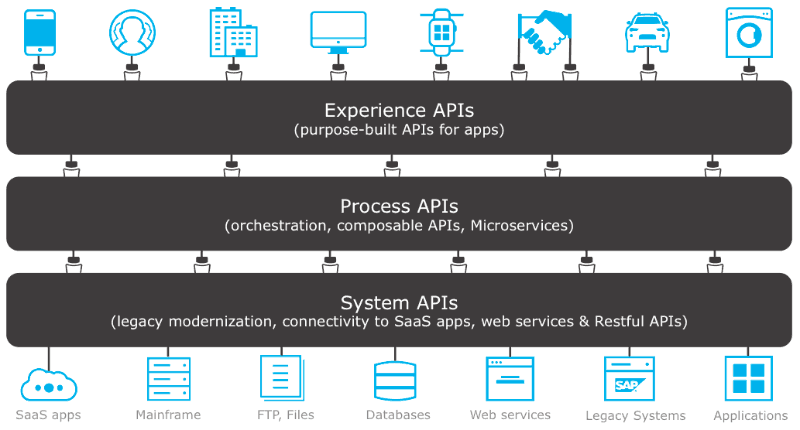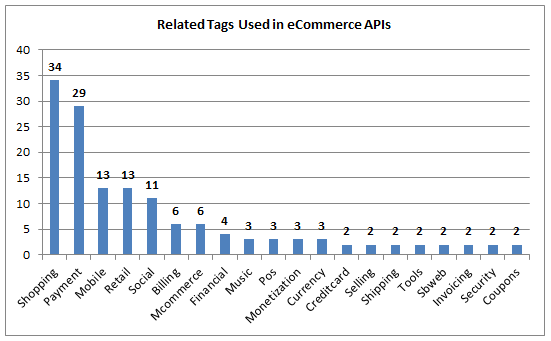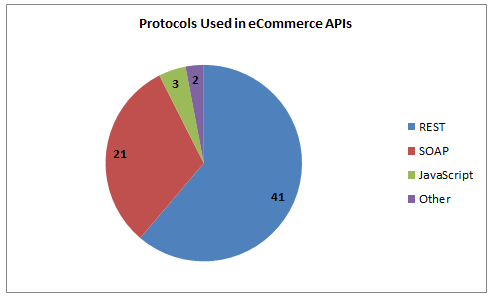Technology is fast-paced and continually shapes and affects the eCommerce industry.
With the rise of technologies such as the internet of things (IoT), artificial intelligence (AI), augmented reality/virtual reality (AR/VR), and blockchain, the e-Commerce world has seen many advancements.
But among the dozens of E-commerce-related technologies, there is one that connects them all. APIs are gradually improving eCommerce applications and websites by connecting them with each other.
eCommerce APIs help developers transfer information from one software to another and then use this data in a single user interface.
APIs work as an extensible platform that integrates with various solutions so companies can take advantage of their existing functionality without building features from scratch.
The Benefits of API Integration for an E-commerce Platform

APIs help integrate several platforms with one another. For example, you can integrate your E-commerce website with a shipping provider's account and import your data for orders and shipments. This way, you can streamline your shipping operations on one platform.
E-commerce fulfillment APIs can help businesses automate, coordinate, manage, and streamline their operations with features such as order fulfillment, courier management, labeling, invoicing, printing shipment information, tracking, and confirmation notifications.
So if you want to establish a solid platform for your E-commerce business, you will need to integrate an API in your shipping and logistics software solution.
It's Extensible
APIs connect different software components and enable them to interact with each other by receiving requests and sending responses.
It extends the functionality of an application or website, helping you get work done faster. It also simplifies information sharing.
Increased Security
APIs enhance the security of software systems by letting users request data from your systems. The API protects your E-commerce data with security measures such as encryption.
Reusability
APIs can be reused across platforms and applications because they are built using a service-oriented approach.
Reusable programs reduce the time and effort developers must spend on the project which in turn increases their productivity.
Scalability
APIs enable you to connect to any new system without making any changes in the original system, program, or hardware.
It just takes a few lines of code to connect with any new system and offers scalability to handle more complex transactions.
Synchronization
Due to API integration, you can pick and choose elements of your online store from other applications and programs to create a platform according to your specific business needs. This way you can synchronize your operations workflow in a logical manner.
Through integrated systems, one company can connect to other companies’ software and applications to manage their data, shipping channels, products and services which best meet their needs.
So as you can see the API revolution involves all of us.
Now let's learn about three common types of API models that get data from systems, turn data into processes, or create an experience.
3 Common Types of API Models

When you use API-led integration, you can improve the way users interact with new devices and technology shifts.
You can improve the E-commerce fulfillment processes through multichannel selling, inventory management, shipping, or creating personalized experiences across different channels. And there are three types of models you can use to build these APIs.
Experience APIs
These APIs are utilized for data reconfiguration so that the same data can be presented in multiple formats based on users’ needs.
Experience APIs create a common data source for each channel instead of setting up separate integrations for each channel.
Process APIs
These APIs are implemented when integrating different systems of an IT ecosystem. They help create independent data source points to avoid data silos within a single system or across systems.
They don’t rely on other systems where the data is to be delivered. This means that Process APIs help businesses looking to expand their current IT infrastructure.
System APIs
System APIs hide the complexity of the core systems such as FTP servers, ERP, CRM, or legacy systems. These types of APIs typically provide a way to access systems for data and record integration present in the business.
Now I will discuss some E-commerce APIs that can enhance your site’s functionality and improve your customers' experience.
The Different Types of E-commerce APIs

API integration lets developers integrate various functionality of their systems directly into online stores. This helps streamline the order fulfillment, shipping, and delivery processes.
There are hundreds of E-commerce APIs for developers to browse through. Some of them are available for adding orders, shipping, tracking, getting products, viewing, buying and selling, and even creating marketing segments, and plenty of other tasks.
Here I'll highlight some of the most popular and useful.
Product information API
A product information API allows you to extract product details from a database of products that includes information about product descriptions, product ID, product titles, product specs, product images, pricing, the number of products, and more.
Orders API
Orders APIs include details about orders that are created from your channel. This API syncs order import and export status and displays a list of all created and available orders in your account.
A user can sort and filter the order data according to the date of packaging and shipping.
You can also cancel orders, return orders, create bulk import orders, and add inventory for an ordered product. Further parameters can be added as required.
Inventory API
You can use this API to sort and filter inventory data and check the inventory details of a product's SKU. With this API you can also update product inventory details for a specified product.
Shipping API
This API lets you automate the process of shipping. It allows you to connect with the logistics providers and you can track details from the product sale through the package being delivered to a customer. It can also automate the process of creating packaging invoices and labels.
The Shipping API allows you to choose from multiple carriers based on their delivery time, rates, and location. Shipment tracking is also possible with this type of API. It enables you to integrate order tracking information into a mobile application or website or via an email or a text message.
Couriers API
Use this API to check for courier options and serviceability in a particular region and create a request for the pickup of your order.
You can also use this API to assign a unique tracking number to your shipment that helps you track the shipment and get details about it.
Wrapper API
You can use this all in one API to create an order, ship an order, and generate labels and invoices for the same order. With this API you can do multiple tasks in one go.
Channels API
The channel API gives you details about all the integrated channels in your account (for example Shopify, Magento, Opencart, WooCommerce, or Amazon marketplace).
The API assigns a unique channel id at the time of order creation that can be used to select or specify a custom channel for your account. This API also shows a list of all the channels already integrated into your store’s account.
Catalog API
With this API you can create, edit, and manage your product catalog within a few minutes. It also supports integration with other key systems of your business such as order fulfillment, inventory management, and reporting & analysis.
Authentication/Login API
The authentication or login API is the access authorization that you need to access the resources of a shipping provider's site. This login API helps the channel owner validate that you are a valid user.
Payment API
With the payment API you can create an application for the checkout process that accepts payment through credit card or debit card. The Payment API can be programmed according to your existing payment gateway.
Validation API
The Validation API helps verify the address and other customer details that they enter on the website.
The API verifies the address and identifies a new customer or existing customer and decides the possible deliverability issues. This API automates the validation and correction of address issues and also eliminates the hassle of verifying documents.
Marketing API
A useful API to automate email marketing functions and segmentation based on the customer'ss buying behaviors, purchase history, location, and other criteria.
How Do E-commerce APIs Work?

As mentioned above, APIs allow you to interact with your site and other systems under the hood and display this information to customers.
These APIs are useful for E-commerce websites because there are tons of requests, responses, and logic that you need to handle at the same time.
These API's are commonly based on REST architecture and use the HTTP request methods to make a request for information to the server.
REST APIs use a simple URL and are lightweight to implement with almost any tool. Developers get a set of search and query tools with the REST API that helps them gain deeper access to a website's data.
REST APIs also support OAuth 2.0 authentication for security purposes (which is also used in popular apps such as Facebook and Google). Additionally, the REST API supports cross-platform development and a wider range of programming languages.
Developers can integrate E-commerce APIs into a website by using the following information.
- Resources refers to an object that determines the relationship to other resources and methods that operate on it.
- Endpoints are touchpoints of interaction of APIs with another system.
- HTTP Methods are the allowed interactions that include GET for retrieving resources, POST for creating resources, and PUT for changing or replacing resources.
- Parameters are criteria that have a name, value type, and description to determine the type of action you want to take on the resource.
- The Sample Request and Response Objects identify inputs and outputs of a resource.
End Note
E-commerce shipping and order fulfillment can be much easier if you use API integration and the right technology.
At the end of the day, every decision you make about your E-commerce business should help you achieve your goals. As far as shipping and order fulfillment is concerned, using E-commerce APIs achieves both of these objectives.
So what are you waiting for? Get started using E-commerce APIs now!
Need some help? You can get in touch with the Shiprocket team to learn more about possible solutions.
Thank you for reading!

